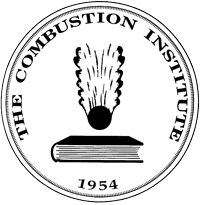GFN’s Dr Ana Cubero will present the group’s latest developments in the field of numerical simulation of Fluidized Bed Combustors at SPEIC14.
SPEIC14 is an international meeting on sustainable combustion jointly organized by the Portuguese and Spanish sections of The Combustion Institute. It will take place in Lisbon, from 14-17 Nov 2015.
The Eulerian-Eulerian multiphase flow modeling approach treats all the phases as interpenetrating continua; and postulates mass, momentum and energy conservation equations for each of the phases in the problem. To do so, they introduce an additional set of variables accounting for the fraction of physical space occupied by each phase; additionally, closure models are proposed for the interaction among phases and for the constitutive relations of the granular phases.
Reacting flow models must also incorporate submodels for particle devolatilization (ie the thermal decomposition of coal whereby some gases are released and the particle is chemically modified), the particle-gas reactions (ie how the surrounding gas reacts with the particle) and the reactions that take place within the gas phase. The understanding of the Eulerian technique as applied to fluidized beds with thermo-chemical reactions is still at a development stage and some aspects need to be further explored, such as: the identification of the several reaction zones in the bed, fuel/combustion gasification behaviour during feeding, mixing of fuel in the dense bed, or ash sintering.
The main purpose of this work is to determine the capacity of the Eulerian-Eulerian approach to capture the different reaction zones in a bubbling fluidized bed. For this, a CFD solver was developed and implemented in OpenFOAM by the present authors. The solver is based on the kinetic theory of granular flow, and uses a consistent IPSA-like algorithm for solving the pressure-velocity coupling. Coal drying, devolatilization, gasification and homogeneous reaction are implemented as submodels.

